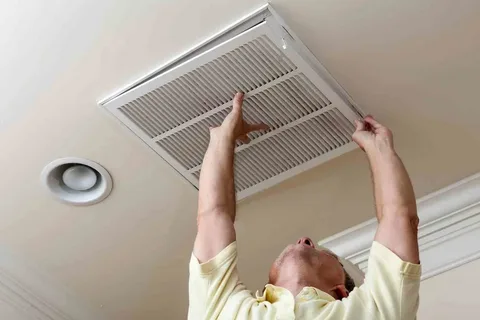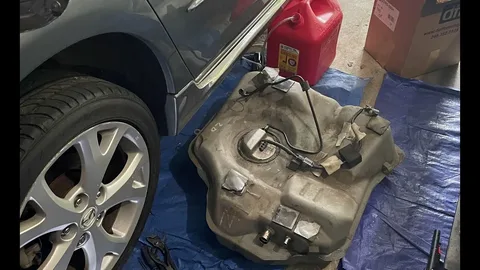Welcome to a breath of fresh air! In today’s fast-paced world, where we spend an astonishing amount of time indoors, the quality of our home environment has never been more critical. Enter residential air exchanger—unsung heroes seeking healthier living spaces. These innovative systems work quietly behind the scenes, ensuring your home remains a sanctuary filled with clean, refreshing air while efficiently expelling indoor pollutants and excess moisture. Imagine coming home to breathe easy, knowing you’re surrounded by pure air that promotes better health and well-being for you and your loved ones.
Introduction to residential air-exchangers and their purpose
Imagine stepping into your home and feeling an immediate sense of freshness, as if you had just opened a window to the great outdoors. This isn’t just wishful thinking—it’s what a residential air-exchanger can bring to your living space. With rising concerns about indoor air quality, these systems have become essential for modern homes. They help circulate fresh air and play a crucial role in maintaining a healthy environment for you and your family.
Are you ready to discover how this innovative technology can transform your home’s atmosphere? Let’s explore the incredible benefits of residential air-exchangers!
The Benefits of Having a Fresh Air Exchange System in Your Home
A fresh air exchange system offers a breath of fresh air—literally. It improves indoor air quality by replacing stale air with clean, filtered outside air. This is especially crucial in tightly sealed homes where pollutants can accumulate.
With an efficient airflow system, these units help reduce allergens and irritants like dust, pollen, and pet dander. Good ventilation means fewer allergy flare-ups and respiratory issues for those sensitive to such particles.
Additionally, an air-exchanger helps regulate humidity levels. This prevents excess moisture from creating conditions favourable for mould growth, a common concern in many households. Energy efficiency is another notable benefit. Recovering heat or coolness during the exchange process minimizes energy waste while maintaining comfort levels throughout your living spaces.
How a Residential Air-Exchanger Works
A residential air-exchanger facilitates the exchange of stale indoor air with fresh outdoor air, enhancing indoor air quality while maintaining energy efficiency. The system typically consists of two fans: one that pulls in outside air and another that expels interior air. As these two streams pass through a heat exchanger, they transfer temperature without mixing.
In colder months, the outgoing warm air preheats the incoming cold air. Conversely, during summer, it cools down the incoming airflow. This means your home stays comfortable year-round without excessive energy consumption.
Filters play an essential role, too. They trap dust and allergens before you breathe them in, contributing to a healthier living space. With regular maintenance, these components ensure optimal performance for years to come.
Common Types of Residential Air-Exchangers Available
When exploring residential air-exchangers, it’s essential to understand the various types on the market. Each type caters to different needs and home environments. Heat Recovery Ventilators (HRVs) are prevalent in cold climates. They transfer heat from outgoing stale air to incoming fresh air, maintaining comfort while ensuring ventilation.
Energy Recovery Ventilators (ERVs) work similarly but also manage humidity levels. This feature is particularly beneficial in regions with high moisture levels, preventing mould growth and improving indoor air quality.
Balanced ventilators offer a more neutral approach by supplying and exhausting equal air. These systems ensure pressure remains stable inside your home without creating drafts or discomfort. Finally, exhaust-only systems focus on removing stale indoor air while drawing fresh outdoor air through passive means. They’re often more straightforward and less expensive but may not provide adequate ventilation for larger homes or tight spaces.
Factors to Consider when Choosing a House Fresh Air System
When choosing a house fresh air system, several factors need to be considered to ensure that you select the best option for your home. With the wide range of options available on the market, deciding which system will work best for you and your family can be overwhelming. Here are some essential factors to keep in mind when making this decision:
1.Size and Capacity
A house’s fresh air system’s size and capacity are crucial as they determine how much air can be exchanged at one time. It is essential to consider the square footage of your home and choose a system capable of providing enough fresh air for all rooms.
2. Energy Efficiency
Opting for an energy-efficient house fresh air system helps reduce your carbon footprint and saves you money on utility bills in the long run. Look for systems with high energy efficiency ratings, such as Energy Star-certified models.
3. Filtration System
The filtration system removes pollutants and contaminants from the incoming air before it enters your home. Choose a system with effective filters that capture tiny particles like dust, pollen, and bacteria.
4. Noise Level
The noise level may be an important consideration depending on where the unit will be installed. If you plan on placing it near bedrooms or living areas, look for systems with low noise levels to avoid disturbances.
By considering these factors, you can make an informed decision when selecting a fresh air system for your home. Remember that investing in the right system will provide you with fresher and healthier air and create a more comfortable living environment for you and your family.
Maintaining and Cleaning your Residential Air-Exchanger for Optimal Performance
Maintaining your residential air-exchanger is crucial for ensuring it operates efficiently. Regular cleaning can prevent dust and allergens from circulating in your home. Start by checking the filters every one to three months. Clean or replace them as needed. Dirty filters restrict airflow, reducing the unit’s efficiency.
Next, inspect the ducts for obstructions and clear any debris that may have accumulated over time. This helps maintain optimal airflow throughout your system. Remember the fan and heat exchange core. Gently wipe these components with a damp cloth to remove dust buildup.
Consider scheduling professional maintenance annually. A technician can thoroughly inspect and tune up, keeping everything running smoothly. By prioritizing regular care, you’ll significantly prolong your air-exchanger’s lifespan while enhancing indoor air quality.
The Impact of a Well-Ventilated Home on Overall Health and Well-Being
A well-ventilated home significantly enhances indoor air quality. Fresh, clean air reduces allergens and pollutants that can trigger respiratory issues. Good ventilation helps control humidity levels. Excess moisture can lead to mould growth, which poses health risks for inhabitants. Maintaining optimal humidity keeps your living space comfortable and safe.
Moreover, proper airflow promotes better mental clarity. Stale air can contribute to feelings of fatigue or lethargy. With fresh oxygen circulating, you might be more focused and energized throughout the day.
Finally, a balanced environment fosters a sense of well-being. People often feel happier and more relaxed in spaces filled with fresh air than in stuffy conditions. Prioritizing ventilation is an easy way to nurture physical health and emotional wellness at home.
Energy Efficiency and Cost Savings with Fresh Air Ventilation
Energy efficiency is a crucial factor for homeowners today. A fresh air ventilation system can significantly reduce energy consumption.
These systems minimize the need for heating or cooling by continuously replacing stale indoor air with fresh outdoor air. They maintain consistent temperatures while improving indoor air quality. Cost savings also come into play. With better ventilation, your HVAC system doesn’t have to work as hard, leading to lower utility bills.
Additionally, some models allow for heat recovery. This means they capture existing warmth from outgoing air and transfer it to incoming cool air, further enhancing efficiency. Investing in an air-exchanger benefits your wallet and creates a more comfortable living environment throughout the year.
Conclusion
Investing in a residential air exchanger can significantly enhance your living environment. These systems improve indoor air quality and contribute to better health and comfort for you and your family. Fresh air circulation effectively manages allergens, dust, and moisture. Choosing the right unit is essential. Consider factors like size, efficiency ratings, and maintenance requirements before deciding. Regular upkeep ensures your system runs smoothly for years to come.
FAQs
1. What is a residential air exchanger?
A residential air exchanger, air-to-air heat exchanger or ventilation system is a mechanical device that brings fresh outdoor air into the home while removing stale indoor air. It works by transferring heat and moisture between incoming and outgoing airstreams, helping to maintain a comfortable temperature and humidity level in the house.
2. Why is it essential to have a residential air-exchanger?
According to the Environmental Protection Agency (EPA), indoor air pollution can be two to five times higher than outdoor levels. This can lead to health issues such as allergies, respiratory problems, and even more serious conditions like heart disease. A residential air-exchanger helps improve indoor air quality by constantly bringing in fresh outdoor air and expelling stale indoor air.
3. How does a residential air-exchanger work?
Most residential air-exchangers use a heat recovery or energy recovery system to transfer heat and humidity between incoming and outgoing airstreams. In a heat recovery system, warm indoor exhaust air passes through one side of the heat exchange core while cool outdoor intake air passes through the other. The two airstreams never mix but transfer thermal energy from one another, keeping the home warm in winter and cool in summer without losing energy.
| Related Business Listings |
| Contact Directory |
| Local Business Profiles |




